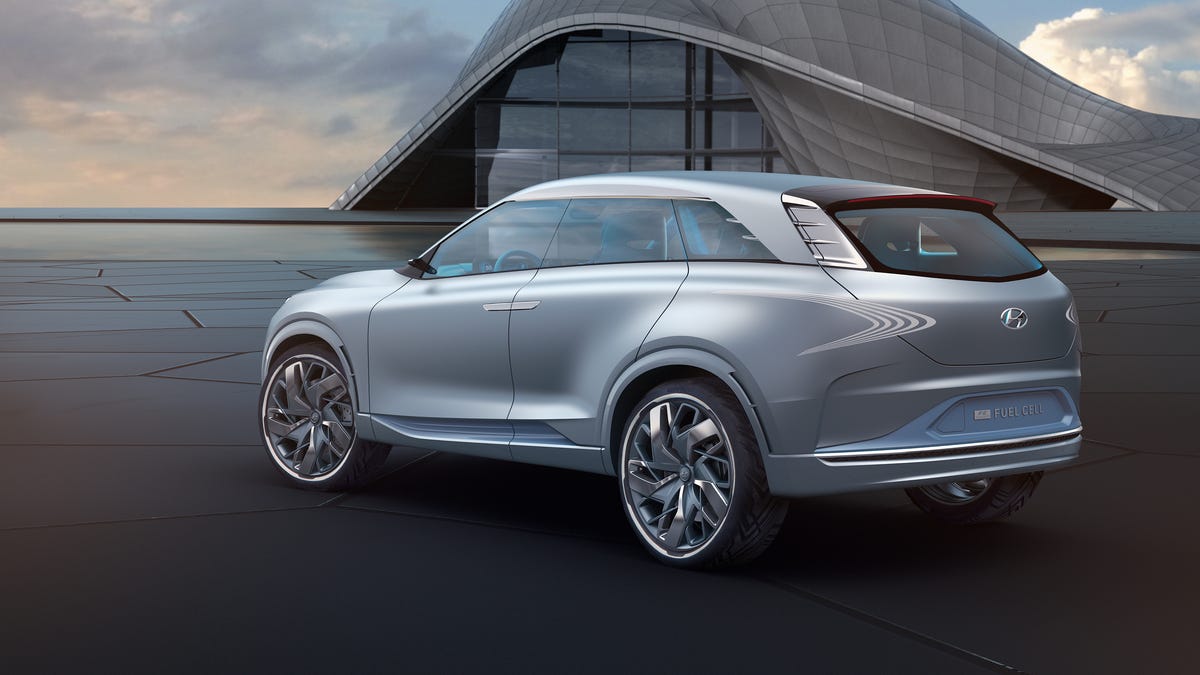Kia promises a hydrogen fuel cell car by 2020
It may not come to the US, but hey, points for committing to one in the first place.

Hyundai and its sister company Kia haven't done more than dip toes into the pool of hydrogen fuel cell technology. But that's on the verge of changing.
Kia will debut its first hydrogen fuel cell vehicle by 2020, Automotive News reports, citing a conversation with Lee Ki-sang, senior vice president of the Eco Technology Center, which develops eco-friendlier cars for both Hyundai and Kia.
However, some other events need to transpire first. In 2018, Hyundai will show off its next generation of hydrogen powertrains with a vehicle carrying a Hyundai badge. This is keeping in line with a timeframe initially offered in June 2016.
The Hyundai FE Fuel Cell Concept from Geneva is the first step in Hyundai's forthcoming hydrogen efforts.
It's doing this because staggering the launch is better for Hyundai's limited resources, and because starting with its more expensive brand means it can better recoup (and eventually lower) costs by the time the tech heads to Kia, which produces more affordable vehicles.
While not much is known about Kia's fuel cell vehicle, Hyundai gave us a hint to its next-gen fuel cell vehicle at the 2017 Geneva Motor Show. The FE Fuel Cell Concept boasts a whole lot of lines, no grille and a futuristic interior. It promises a massive range improvement over its current powertrain, thanks to an improved cell stack density.
Hyundai's first fuel cell vehicle was the Tucson Fuel Cell, a modified Tucson crossover available in the US, albeit only in California. It promises a 265-mile range, and in late 2015, it picked up a world record for the fastest production hydrogen fuel-cell crossover with a 94.6-mph run across a dry lake bed.
New hydrogen models from Hyundai and Kia will arrive at just the right time. Toyota already has its Mirai fuel cell vehicle on sale. Honda and GM recently announced a joint venture where the two automakers hope to produce a next-generation fuel cell system by 2020. Daimler is reportedly getting in on the action with a hydrogen-powered GLC-Class crossover, as well, although it also contains a port for more traditional charging.

